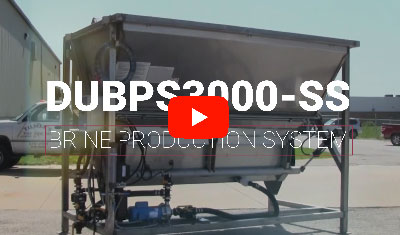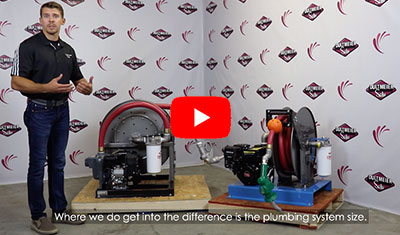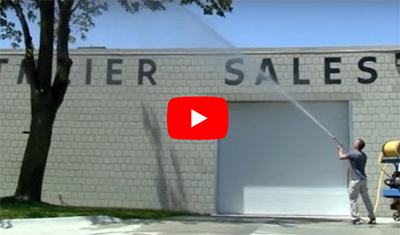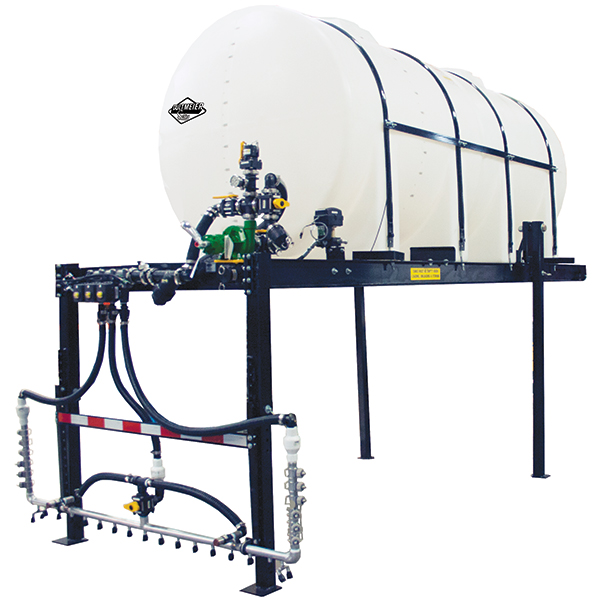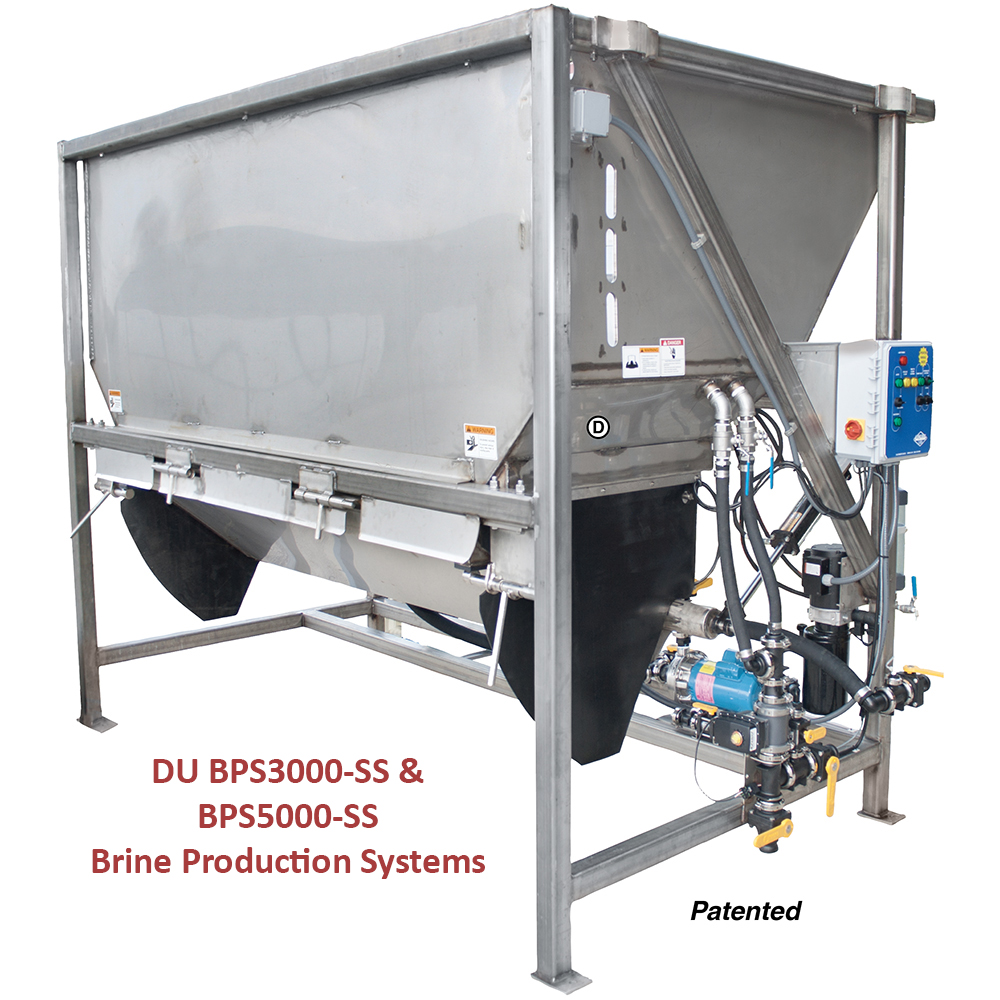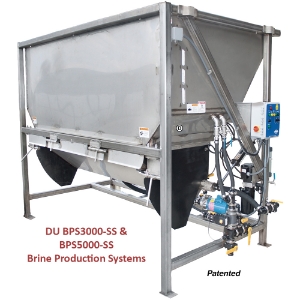
Deicing is a critical component of winter road maintenance, ensuring that roads, highways, and walkways remain safe and navigable during snowy and icy conditions. However, the effectiveness of deicing practices hinges on a solid understanding of key industry terminology.
Whether you're a contractor, part of a municipal team, or work with a Department of Transportation (DOT), familiarizing yourself with these terms is essential for successful operations. In this guide, we'll break down the most important deicing terms, helping you to better understand and implement the best practices for keeping roads clear and safe throughout the winter season.
Common Deicing Terms and What They Mean
At Dultmeier, we have decades of experience building and selling deicing equipment. Over the years we have gained a thorough understanding of the industry lingo. So, let’s look at the common terms that you should know.
Anti-Icing
Also known as “pre-treating”, anti-icing refers to the process of spraying liquid deicers on roadways before snow or ice begins to accumulate. This method is primarily used to prevent the formation of ice and to stop snow from bonding with the road surface.
Anti-icing is also commonly applied on city streets, highways, parking lots, and bridges during the winter to prevent black ice from forming. It can be used on just about any surface that gets vehicle or foot traffic. The typical application rates for anti-icing are in the range of 30-50 gallons per lane mile (*to be certain you should consult your product supplier). This method is proactive, aiming to make it easier to keep roads clear during winter weather.
How It Works:
Anti-icing involves the application of liquid chemicals (e.g., salt brine, magnesium chloride, calcium chloride, & other products) directly to the road surface. These chemicals lower the freezing point of water, preventing ice from forming.
Benefits:
- Preventative Measure: By applying anti-icing agents before a storm, the road surface is less likely to become icy, which can improve traction and reduce the number of accidents.
- Efficiency: Applying liquids prior to storms allows you to plan and allocate resources. Brine can be made ready ahead of time and roads get treated when conditions are more friendly.
- Reduced Chemical Usage: Anti-icing requires less chemical application compared to de-icing, making it more cost-effective and environmentally friendly.
- Easier Snow Removal: Since snow is less likely to bond with the pavement, it is easier to plow and remove.
Liquid De-Icing
Liquid de-icing involves spraying liquid deicers on roads after snow or ice has already begun to fall. The purpose of liquid de-icing is to melt the existing snow and ice on the roadway. Because it deals with already-formed ice, de-icing requires higher application rates, approximately 3-5 times greater than those used in anti-icing. This reactive approach is necessary once snow and ice have bonded to the road surface.
How It Works:
De-icing involves spraying liquid (e.g., salt brine, magnesium chloride, calcium chloride, & other products) onto the ice and snow-covered road. These chemicals melt the ice by lowering its freezing point, turning it into slush that can be plowed away.
Benefits:
- Immediate Action: De-icing can quickly address hazardous road conditions after a storm, making roads safer for travel.
- Wide Application: It can be applied to various surfaces and conditions where ice has already formed.
The equipment used for liquid de-icing and anti-icing is essentially the same. The primary difference is in the amount of liquid applied and the size of the nozzles used to apply it. We will discuss this more in a minute.
>View Deice and Anti-Ice Sprayers
Pre-Wetting
"Pre-Wetting" refers to the process of spraying liquid deicer onto road salt, either when it is in a salt pile or when it is running up a conveyor or spraying the salt/sand mixture on a truck just as it comes off the spinner or auger. This technique helps enhance the effectiveness of solid deicers by ensuring better adherence to the road surface and improving the melting action.
Benefit: Pre-wetting can reduce the amount of solid material needed, decrease the bounce and scatter of salt, and improve the speed at which ice is melted.
Application Rate
Application rates refer to the quantity of liquid deicer applied per lane mile (GPLM). For example, a common rate for anti-icing with brine might be 30-50 GPLM. This rate can vary depending on factors like weather conditions, type of deicer, and road surface conditions. Controlling the application rate is an important aspect of a de-ice or anti-ice sprayer. The speed at which you travel while applying the liquid affects the overall application rate; if you speed up the sprayer output must increase to maintain your overall GPLM rate.
There are multiple ways to adjust your rate, manual pressure-based control and automatic rate control. Manual controls require the operator to adjust the pump output as needed when they change speed. This requires that you monitor the flow or pressure and calculate ahead of time the level of adjustment needed for specific increases or decreases in speed. Automatic rate control systems let you set your rate and the system makes the adjustments automatically as speed changes. This is a complex subject and for more details, look at this article that covers sprayer rate control methods, and more detail.
View options for automatic rate controllers here.
Anti-Icing & Deicing Spray Nozzles
The nozzles used on the sprayer must be sized to accommodate the desired application rate and range of speeds during operation. Additionally, if the same sprayer is used for both anti-icing and de-icing, different sets of nozzles might be needed due to the varying application rates. Variable orifice nozzles are also available.
Commonly solid stream nozzles are used for de-icing and anti-icing. Solid stream nozzles penetrate the surface of the ice/snow better than flat fan nozzles. Allowing the deicing liquid to melt from the bottom up.
Stainless Steel Deicing Nozzles
Lane Mile
This is a measure of distance, where one lane mile equals one mile of roadway in one lane. To apply the deicer, you need to know the total number of lane miles you will treat. For example, if you are treating a highway that is 10 miles long with 2 lanes, you have 20 lane miles (10 miles x 2 lanes).
Salinity
Salinity refers to the concentration of salt in a brine solution, typically measured in percentage by weight of salt. Salinity is a key factor in determining the effectiveness of a salt brine used for de-icing or anti-icing. For example, a standard salt brine solution might have a maximum salinity of 26.4% by weight, the point at which the brine is 100% saturated. The optimal salinity for salt brine is close to 23.3% by weight with a -6° F freezing point.
Salimeter
A Salimeter is a tool used to measure the salinity or concentration of salt in a solution, typically in a brine solution used for de-icing or anti-icing. It provides a direct reading of the salt content in percentage by weight or in terms of saturation, allowing operators to ensure that the brine solution has the optimal concentration for preventing ice formation or for melting existing ice.
How it Works:
- Measurement Scale: Salimeters typically have a scale that measures the percentage of salt in the solution, with a common range being from 0% to 26.4% for sodium chloride brine (26.4% is the 100% saturation point of salt in water at normal temperatures). Salimeters are also available that measure the percentage of saturation on a scale of 0-100%.
View available Salimeters:
Usage in Winter Road Maintenance: By using a salimeter, DOTs and contractors can verify that their brine solutions are correctly mixed to achieve maximum effectiveness in ice prevention or removal. Proper salinity ensures that the brine is neither too diluted (which would reduce its effectiveness) nor too concentrated (which could lead to waste).
Brine Maker
A brine maker is a specialized system designed for the efficient production of salt brine, which is commonly used for anti-icing and de-icing roadways. The system is designed to mix water and salt to create a brine solution with a precise concentration optimal for preventing ice formation and for treating roads before, during, and after snowstorms.
At Dultmeier our brine maker is designed for efficient and reliable production of salt brine, featuring an "easy clean-out" system that simplifies maintenance and reduces downtime. It is built with durable, corrosion-resistant stainless steel, ensuring long-lasting performance in harsh conditions.
The brine maker also includes simple controls for precise mixing, which guarantees consistent brine concentration. These features make it ideal for municipalities, DOTs, and contractors who need to produce large volumes of brine quickly and maintain their equipment with minimal hassle. This system not only enhances operational efficiency but also helps in cost-effective winter road maintenance.
See more details:
Conclusion
Understanding the terminology used in deicing is essential for anyone involved in winter road maintenance. Whether you’re a contractor, part of a municipal team, or work with a DOT, knowing these key terms will help you make informed decisions and apply the best practices for ice and snow control.
Tom Hansen, P.E.
Tom Hansen, Partner and Engineer at Dultmeier Sales, brings over 25 years of expertise in fluid handling equipment for agriculture, deicing, petroleum, and more.


